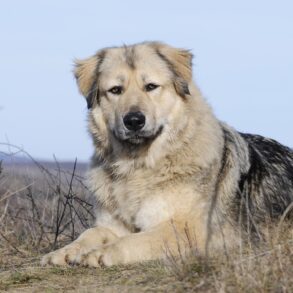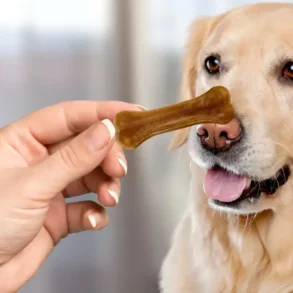Bathing to paw care: Ultimate guide to dog grooming for keeping your furry friend clean and hygienic
Discover a detailed guide to dog care with expert advice from a veterinarian, covering all the essential tips for maintaining your dog’s health and hygiene.
Dog hygiene is a concern for every dog parent, especially when they come home wagging their tail after rolling in the mud. Timely grooming is of utmost importance to avoid discomfort or exacerbate any issues due to poor hygiene. A dog’s health is rooted in good hygiene.

In an interview with HT, Dr Deepak Saraswat, Head Veterinarian at Zigly (also at Zigly Pet Grooming Fest), outlined and elaborated on the key areas of hygiene for dogs and how to go about it. Grooming is vital for the dog’s wellbeing as he said, “Regular grooming is essential for maintaining a dog’s health, hygiene, and comfort. It helps prevent matting, reduces shedding, and allows early detection of skin issues, parasites, or infections.”
Bathing

Bathing is one of the cornerstones of hygiene, keeping odour, germs and poor skin conditions away. Often, dog parents may be in a dilemma regarding the exact frequency. Dr Saraswat delved into the basics of bathing, providing a guide for all types of dog breeds.
Dr Saraswat explained, “Bathing frequency depends on breed, coat type, and activity level. Short-haired dogs generally need baths every 4–6 weeks, while long-haired and double-coated breeds require more frequent grooming. Hairless breeds may need weekly baths to manage oily skin. Use gentle, hypoallergenic shampoos for sensitive skin, oatmeal-based products for moisturizing, and medicated shampoos for specific issues like bacterial or fungal infections. Always consult your vet for breed-specific recommendations and any skin concerns.”
Brushing fur

Your furry companions need a good brushing of their coats to keep them clean, free from tangles, and healthy. Dr Saraswat explained the essential brushing frequency, as well as the types of tools and conditioners to use for a shinier coat.
He recommended, “Brushing frequency depends on coat type: long-haired dogs (e.g., Poodles, Collies) need daily brushing to prevent mats, while short-haired breeds (e.g., Beagles, Boxers) need weekly brushing to remove loose hair. Double-coated dogs (e.g., Huskies, Goldens) benefit from weekly brushing to manage shedding. Use slicker brushes for tangles and de-shedding tools for heavy shedders. Conditioners with oatmeal or coconut oil help keep coats shiny and moisturized, preventing dryness and breakage.”
Paw care

Dogs are eager to embark on their daily walks and come back tired, burning off all their zoomies energy. But don’t forget to inspect their paws after walk. It’s equally important, so the vet explored the essential aspects of paw care.
Dr Saraswat said, “It’s important to clean your dog’s paws after each walk to remove dirt, salt, chemicals, or debris that can irritate the skin or cause infections. Use a damp cloth or paw wipes to gently clean between the pads and toes. For moisturizing, apply a dog-safe paw balm or cream, especially in winter or dry conditions. Regular paw care helps prevent cracked pads and infections. Always check for injuries or foreign objects after walks.”
Dental hygiene

Oral health is an essential component of hygiene and plays a vital role in your dog’s overall wellbeing. From preventing serious dental conditions to reducing bad breath, dental hygiene needs a proper routine too. Dr Saraswat revealed,”Ideally, a dog’s teeth should be brushed 3–4 times a week to prevent plaque build-up and maintain oral health. Signs that indicate a vet visit is needed include bad breath, red or swollen gums, bleeding gums, or difficulty eating. Persistent plaque or tartar can lead to gum disease, tooth loss, and other health issues. Regular dental check-ups are also important for early detection of problems.”
Trimming nails

Their nails grow longer and may be a hazard to you or your furniture. Dr Saraswat described how to properly trim the nails without hurting them. He said,” Trim your dog’s nails every 2–4 weeks, ensuring you don’t cut into the quick (the pink area with blood vessels). Use proper dog nail clippers (guillotine or scissor type) and trim a small amount at a time. If your dog has dark nails, trim in small increments to avoid cutting too deep. Be cautious of the quick, especially on lighter-colored nails where it’s visible. If you accidentally cut the quick, apply styptic powder to stop bleeding. Always reward your dog for calm behavior during trimming.”
ALSO READ: Study suggests your dogs understand you better when you use your baby voice
Ear and eye hygiene

More often than not overlooked in a dog’s hygiene routine, ear and eye care take a backseat with the assumption that bathing takes care of them. However, they require additional attention.
Dr Saraswat suggested,” Regular cleaning of a dog’s ears is necessary, especially for breeds with floppy ears or excess wax build-up; eyes may need occasional wiping for breeds prone to tear stains. Signs of irritation include redness, swelling, odour, discharge, or excessive scratching or rubbing of the ears and eyes. If you notice these signs, or if your dog seems in pain or is constantly pawing at their face, a vet visit is necessary to check for infections or other issues.”
See more
This post was originally published on this site be sure to check out more of their content.







































